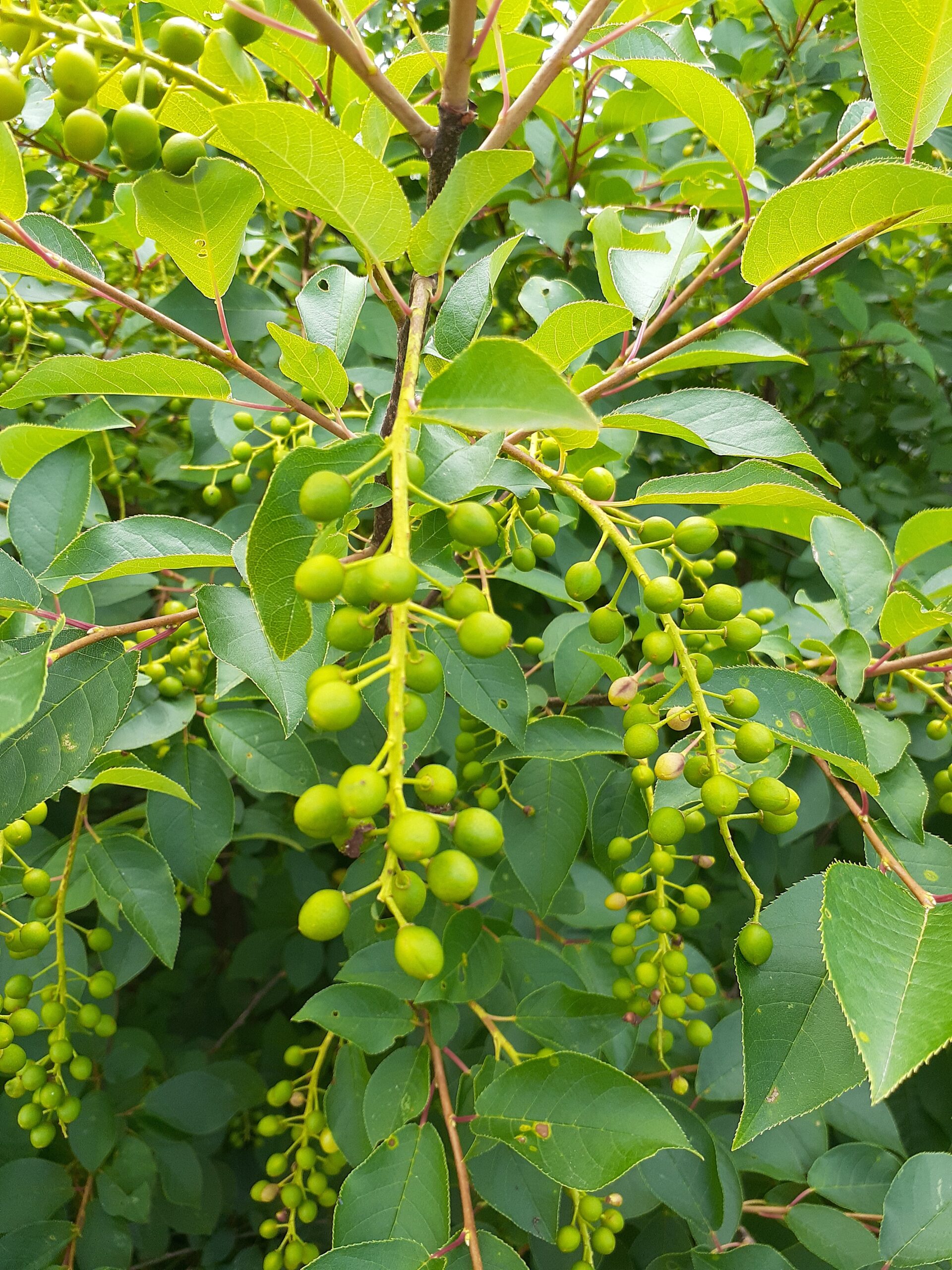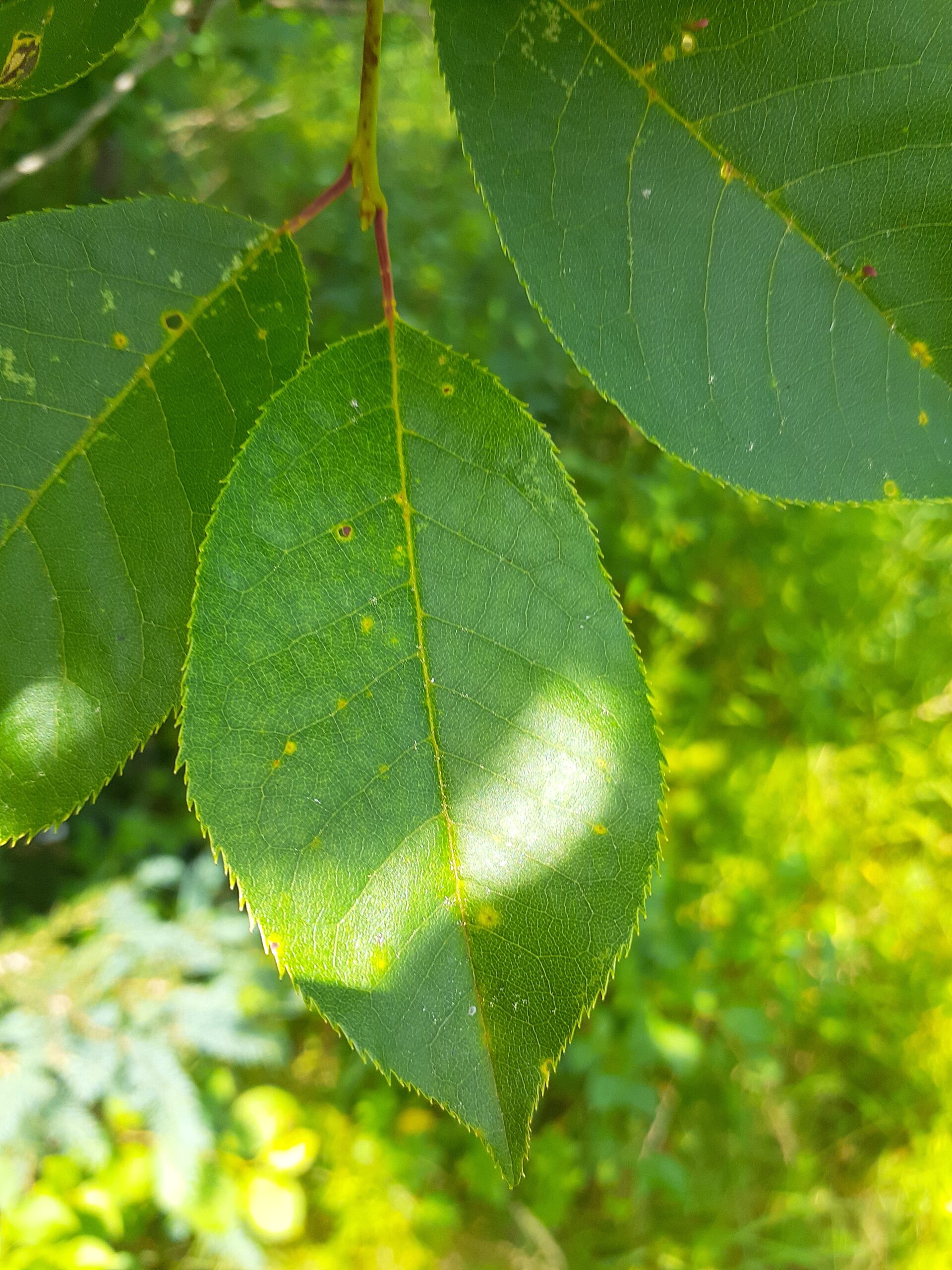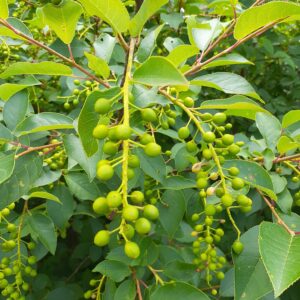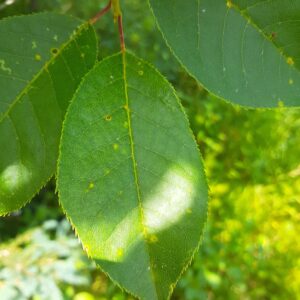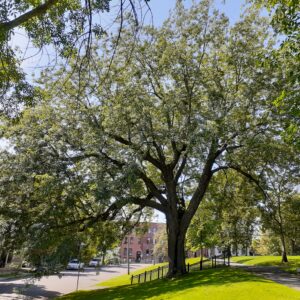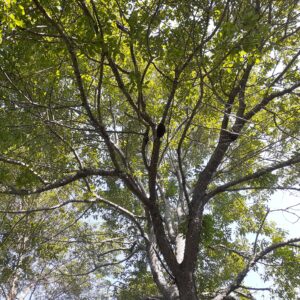Chokecherry
(Eastern Choke Cherry)
Prunus Virginiana
A native to New Brunswick often found growing along borders on open sites. Tends to grow as a multi-stemmed, large shrub but can be trained as a single trunk, small tree. Works well as a privacy screen due to its tendency to produce suckers. Edible berries are a valuable winter food for birds. Attractive white cylindrical clusters of flowers bloom in spring before the leaves are fully formed. Male and female flowers on same tree. All parts of this tree, except the fruit, can be poisonous if consumed in large quantities. Fruits must be pitted before consumption.
Additional information
| Foliage | Deciduous |
|---|---|
| Locale | Native to New Brunswick, Native to North America |
| Height | Small (under 30ft) |
| Width | Narrow |
| Form | Irregular, Multi Stemmed |
| Growth Rate | Moderate |
| Longevity | Short (under 50 years) |
| Hardiness Zones * | 2, 3, 4, 5 |
| Sun Exposure | Full Sun (over 6 hrs), Partial Sun (4 to 6 hrs) |
| Soil Preferences * | Moist, Slightly Acidic, Well Draining |
| Soil Tolerances | Clay, Dry, Slightly Alkaline |
| Other Tolerances | Occasional Drought, Road Salt |
| Ornamental Interest | Fruit, Flowers (attractive) |
| Human Value | Edible (fruit) |
| Wildlife Value | Bees (flowers), Birds (fruits/seeds), Butterflies (flowers), Butterfly Larvae (leaves), Insect Pollinators (flowers), Small Mammals (fruits/seeds) |
| Seed Collection | Personally in NB |
| Planting Considerations | Can Reseed Aggressively, Poisonous Tree Parts, Produces Suckers |






